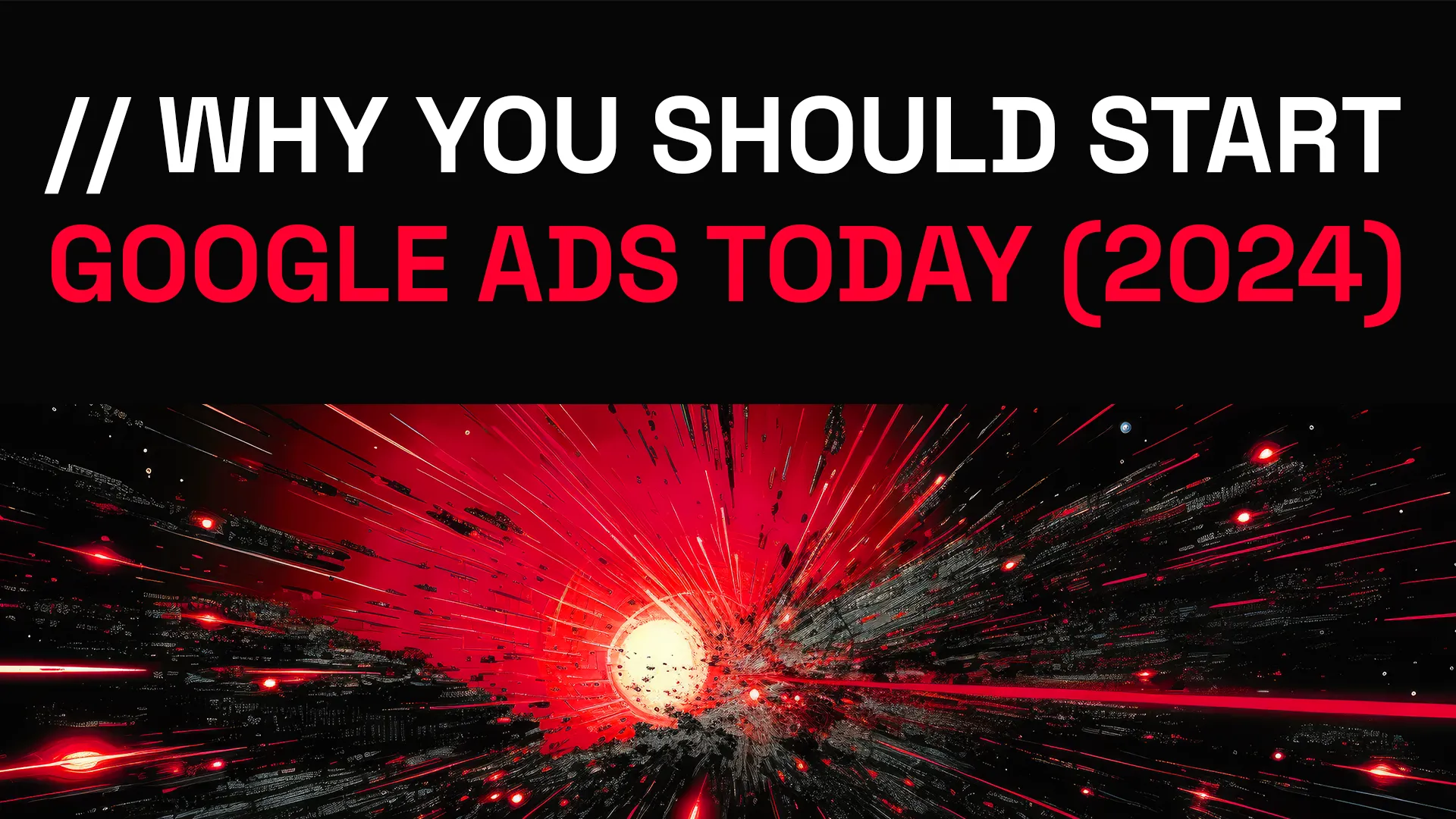
Why You Should Start Google Ads Today (2024)
Introduction
The digital marketing landscape is constantly evolving, with new platforms and advertising channels emerging every year. However, one advertising powerhouse has remained at the forefront – Google Ads.
As consumers spend more time online, Google’s dominance in search and display advertising makes it an essential platform for reaching target audiences.
In this article we will explain why now is the crucial time for small brands and local businesses to harness the power of Google Ads.
Immediate Results and Flexibility
Unlike SEO, which takes an average of six months to show results (Search Engine Journal, 2023), Google Ads offers instant results and traffic. Businesses can launch campaigns and see results in real-time, allowing for rapid testing and iteration.
The platform is also extremely flexible in terms of budget control. You can start with small daily budgets as low as $10-20 per day and scale up slowly as you achieve your performance targets.
This ability to start small removes barriers to entry while still generating qualified leads.

Cost-Effective Marketing with Controlled Budget
Pay-per-click advertising means you only pay when a prospect actually clicks your ad, making it a cost-effective way to test campaigns with limited downside, with small businesses spending an average of $1 to $2 per click on the Google Search Network (WordStream, 2024).
Advanced targeting and bidding options on Google Ads empower businesses to stretch their budgets further through careful audience selection and bid optimization.
Control your daily spend accurately and make every dollar count with the platform’s budget management tools.

Sophisticated Targeting Options
Google Ads makes finding your best prospective customers easier through robust audience targeting features. Google Ads has an average conversion rate of 7.04% (WordStream, 2023)
Beyond basics like location, device type, etc. it incorporates advanced options like:
- Demographic targeting – target by age, gender, parental status
- Interest & habit targeting – target based on lifestyle traits
- Remarketing – target past site visitors (this is shifting in the post-3rd party cookies era)
- Similar audiences – find more users like your existing customers
The ability to combine targeting dimensions lets you zero-in on the users most likely to convert.
Average Conversion Rates for Google Ads by Industry (2023)
| Business Category | Avg. Conversion Rate |
| Arts & Entertainment | 13.41% |
| Animals & Pets | 1.57% |
| Apparel / Fashion & Jewelry | 3.03% |
| Attorneys & Legal Services | 7.00% |
| Automotive — For Sale | 5.72% |
| Automotive — Repair, Service & Parts | 12.61% |
| Beauty & Personal Care | 8.16% |
| Business Services | 4.94% |
| Career & Employment | 3.11% |
| Dentists & Dental Services | 10.40% |
| Education & Instruction | 7.07% |
| Finance & Insurance | 4.11% |
| Furniture | 2.57% |
| Health & Fitness | 8.40% |
| Home & Home Improvement | 10.22% |
| Industrial & Commercial | 7.91% |
| Personal Services (Weddings, Cleaners, etc.) | 8.70% |
| Physicians & Surgeons | 13.12% |
| Real Estate | 2.88% |
| Restaurants & Food | 5.06% |
| Shopping, Collectibles & Gifts (General) | 3.69% |
| Sports & Recreation | 5.69% |
| Travel | 3.87% |
source: wordstream.com
Data-Driven Insights and Performance Tracking
The platform offers powerful analytics capabilities through intuitive dashboards, real-time reporting, and pivot tables. You get clear visibility into critical performance indicators like CTR, conversions, conversion value and more. These metrics inform data-backed decisions about budget allocation, ad testing, and campaign optimization for continually improving returns on ad spend.
Businesses that leverage these tools effectively see an average improvement of 20% in their return on investment (ROI) (Google Ads Insights, 2023).
Leveraging Local Search and Geotargeting
For local businesses, precise geotargeting by radius, city or region is available. With 46% of all Google searches looking for local information (HubSpot, 2023), features like local search optimization and geotargeting are crucial for increasing foot traffic and local brand awareness.
Location extensions also help you stand out in search results for users searching near your stores. Further, integration of Google My Business listings into search ads helps drive store visits and foot traffic from local searchers.

The Competitive Edge
In the crowded digital marketplace, Google Ads lets you elevate your visibility above competitors in the most critical real estate online – the search results page. While the highest bidder often wins the top slot, ad position also factors in ad relevance and clickthrough rates. So even modest bids with well-targeted ads can outrank pricier but less relevant ads.
Advertisers who prioritize ad quality can potentially lower their cost per click by up to 50%.
Adapting to Changes and New Features
As with any software platform, you must stay updated on new features and policy changes with Google Ads. Some examples of impactful recent developments:
- Responsive search ads that optimize themselves using AI
- Performance Max campaigns that offer more automation
Early adoption of such innovations can set your PPC campaigns apart. Early adopters of new features, like Performance Max campaigns, often see an increase in total incremental conversions.
Relying on outdated practices may cause you to lag behind the competition.
// CONCLUSION
The multitude of advertising options, precision targeting and built-in analytics make Google Ads a versatile platform for driving online growth. The quick implementation, adjustable budgets and instant traffic generation provide flexibility for businesses to promote themselves in authentic, engaging ways. Harnessing all these advantages now will let your brand thrive amid intensifying digital competition.
Ready to attract more of your ideal customers? Consult with Next Level Digital Marketing to craft a data-driven Google Ads strategy tailored to your business goals. Prioritize growing your online presence now to build momentum for the year.


